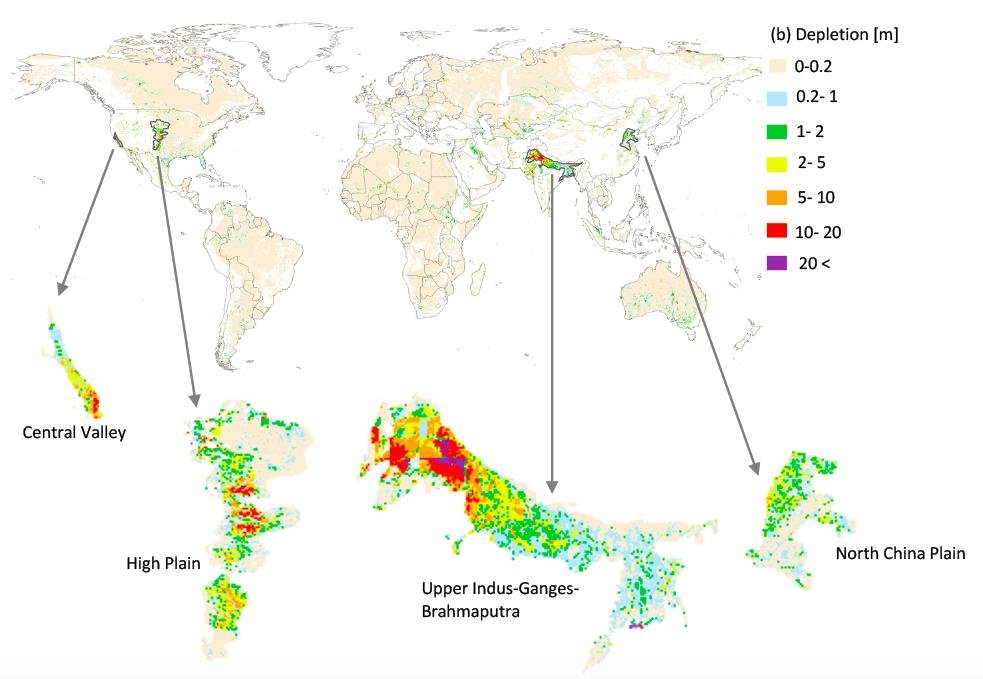Global groundwater depletion
Over the last century, the global population has grown to over 7.6 billion. The necessity to feed all these people has resulted in a dramatic expansion of irrigated agriculture during the 20th century. Moreover, economic development and urbanisation have led to an increase in water demand for industry and domestic use. As a result, the abstracted volume of water for human needs has increased from about 500 to 4000 km3 yr−1 over the last 100 years. In search for new areas to grow food, irrigated agriculture has expanded in areas that are too dry to grow crops with rainfall only and are often lacking enough surface water for irrigation. This has greatly increased the reliability of irrigated crops on groundwater pumping and as a result many of the aquifers around the world are being depleted.
We have developed a global groundwater model coupled to our global hydrology and water resources model PCR-GLOBWB to assess the volume of groundwater depletion to data and also to assess future groundwater depletion under climate and socio-economic change. This model setup also allows us to determine the environmental and economic limits to groundwater pumping and seek for strategies for sustainable groundwater use.


